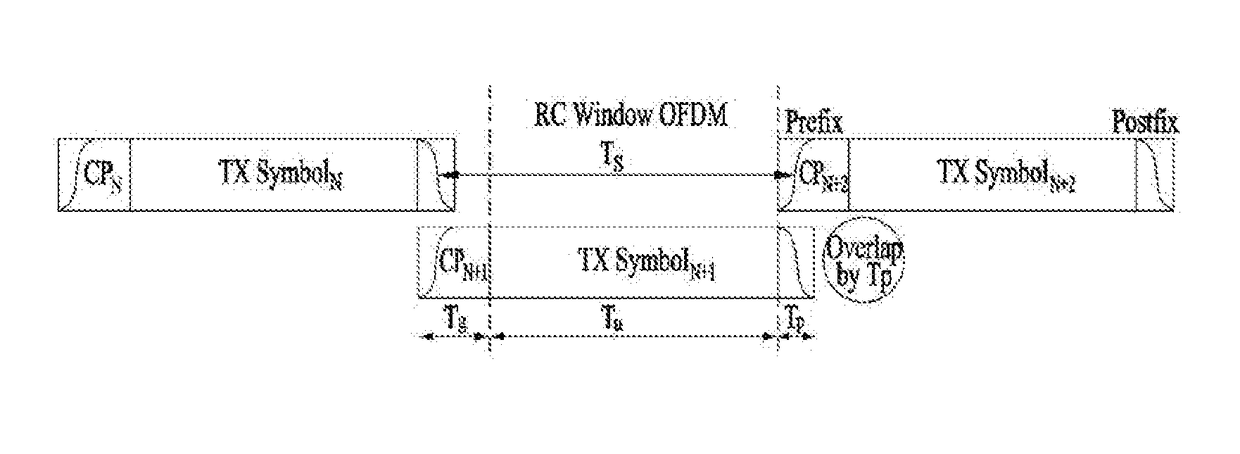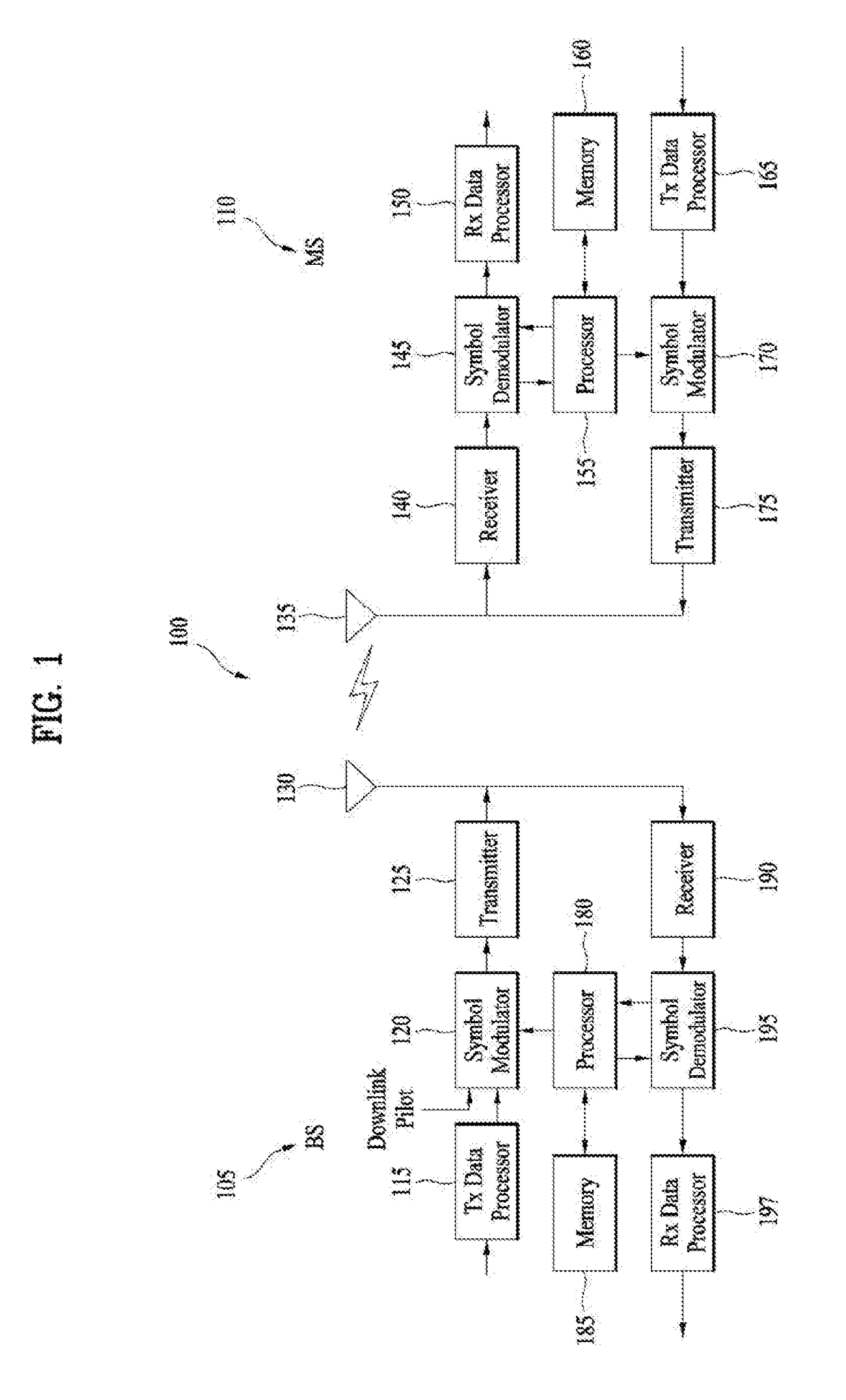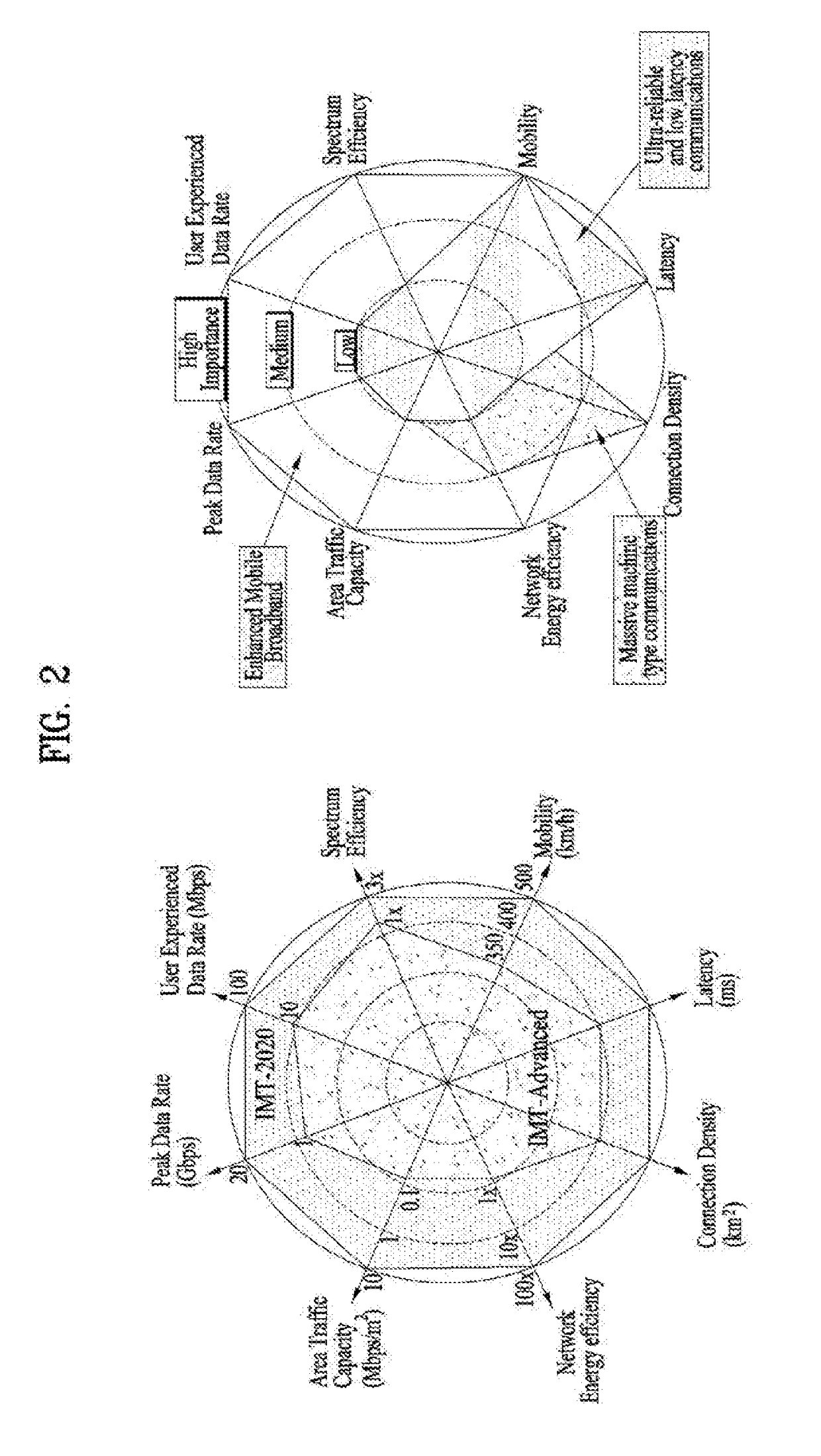Method of transmitting signal by adaptively controlling windowing or filtering in wireless communciation system and apparatus therefor
a wireless communication system and adaptive control technology, applied in the field of wireless communication, to achieve the effect of widening the data transmission bandwidth, improving the spectral containment characteristic in the frequency domain, and enhancing the capability in an asynchronous reception situation
- Summary
- Abstract
- Description
- Claims
- Application Information
AI Technical Summary
Benefits of technology
Problems solved by technology
Method used
Image
Examples
embodiment 1
ltering Selection Scheme Linked with Timing Advance (TA)
[0078]First of all, a transmitting end and a receiving end (eNB / UE) determine a receiving end FFT (Fast Fourier Transform) windowing based on overhead of windowing, i.e., taper length Tp, to maximize performance. And, in case of performing filtering, if information on a filter is known to the transmitting end and the receiving end (eNB / UE), it may be able to maximize SNR (signal to noise ration) by selecting a matched filter (conjugating time-reverse to a filter). Hence, information on windowing / filtering (e.g., taper length Tp in case of performing windowing, filter coefficient in case of performing filtering) between the transmitting end and the receiving end can be useful for enhancing performance.
[0079]And, as mentioned earlier in FIGS. 5a) and 5b), the windowing / filtering scheme is associated with a margin in relation to RF switching time. Hence, it is necessary to adaptively control the taper length Tp and the filter coef...
embodiment 1-1
[0080]A UE determines a windowing type according to a timing advance value and may be then able to transmit UL using the determined windowing type.
[0081]FIG. 7 is a diagram for a case of FIG. 6b) when UL appearing after a GP is transmitted after DL is received in a self-contained subframe (frame) structure.
[0082]In this case, a windowing type corresponds to each windowing of which an effective symbol length is different when windowing is applied. In particular, as an example, the windowing type may correspond to a type distinguished from each other according to the effective symbol length when windowing is applied. As an example, if raised cosine windowing is assumed, a length of windowing varies according to an overhead value alpha. For example, it may consider 3 types of windowing length such as alpha=0.05, 0.1, and 0.15. As an example, Table 1 in the following shows a linkage between a TA and a windowing type between a base station and a UE.
TABLE 1TA range (samples) Windowing typ...
embodiment 1-2
[0086]If DL data to be received does not exist in a subframe and UL data exists in the subframe, a UE transmits the UL data by applying a windowing type corresponding to a smallest TA value. A base station is able to know whether or not a DL / UL resource for the UE is allocated to the subframe. And, the UE is able to know whether or not DL reception data exists in the subframe by decoding DCI information. Hence, if DL reception data does not exist in the subframe and UL transmission data exists in the subframe, the UE selects a windowing type corresponding to a smallest TA value and applies the selected windowing type to transmit UL data. For example, in Table 1, if a UE corresponds to a UE of which a TA value corresponds to 4 us, the UE transmits UL data using a windowing type 1 instead of a windowing type 2.
PUM
 Login to View More
Login to View More Abstract
Description
Claims
Application Information
 Login to View More
Login to View More - R&D
- Intellectual Property
- Life Sciences
- Materials
- Tech Scout
- Unparalleled Data Quality
- Higher Quality Content
- 60% Fewer Hallucinations
Browse by: Latest US Patents, China's latest patents, Technical Efficacy Thesaurus, Application Domain, Technology Topic, Popular Technical Reports.
© 2025 PatSnap. All rights reserved.Legal|Privacy policy|Modern Slavery Act Transparency Statement|Sitemap|About US| Contact US: help@patsnap.com



